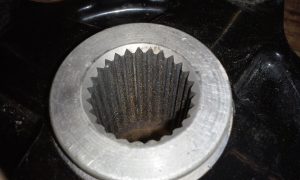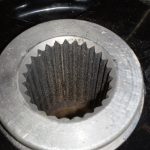Torque-transmitting interfaces are precision-engineered features that enable the controlled transfer of rotary motion and power between components. Unlike simple press fits or threaded fasteners, these interfaces achieve mechanical coupling through the direct engagement of interlocking geometries—such as splines, keys, serrations, or radial teeth. Their design ensures accurate concentricity, angular positioning, and repeatable alignment while maintaining the strength and rigidity required for transmitting torque. Typical examples include splined shafts, Hirth joints, Curvic couplings, and polygonal drive connections, each tailored to specific performance requirements ranging from high-speed spindles to heavy industrial drive systems.
Splines

A spline is a mechanical feature used to prevent rotation on a shaft. It consists of a series of ridges or teeth, known as external or male splines, on the shaft, and corresponding grooves or slots, known as internal or female splines, on the mating component. The two components fit together with the male splines...
Hirth Joints
A Hirth joint, sometimes called a Hirth coupling, is a precision face-to-face connection used to transmit torque while maintaining accurate concentric alignment between rotating components. Each mating face is machined with a series of radial serrations that form tapered teeth, typically arranged in a circular pattern around the shaft axis. When the two faces are...
Splines
A spline is a mechanical feature used to prevent rotation on a shaft. It consists of a series of ridges...
Hirth Joints
A Hirth joint, sometimes called a Hirth coupling, is a precision face-to-face connection used to transmit...

